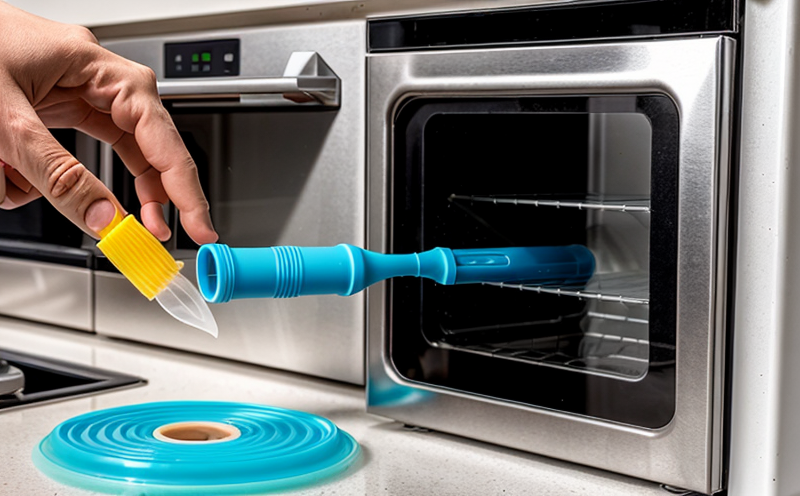ISO 175 Chemical Resistance Testing of Household Plastics
The ISO 175 standard specifies a method for determining the resistance to chemical attack in household plastics. This testing is crucial for ensuring that plastic materials used in everyday products, such as containers, packaging, and toys, can withstand exposure to various chemicals without degrading or leaching harmful substances.
Household plastics are often subjected to a range of environmental conditions including temperature fluctuations, humidity, and contact with solvents, detergents, and other household chemicals. Ensuring these materials meet rigorous standards is essential for product safety, regulatory compliance, and maintaining brand integrity.
The ISO 175 test involves immersing the specimen in a specified chemical solution at controlled temperatures for a set duration. The goal is to observe any changes in the physical properties of the plastic such as discoloration, deformation, or loss of mechanical strength. The results provide critical insights into how household plastics will perform under real-world conditions.
Understanding the chemical resistance of household plastics helps manufacturers make informed decisions about material selection and product design. This testing is particularly important for materials that come into direct contact with food, beverages, or other consumables to ensure they do not leach hazardous chemicals like phthalates, BPA, or other endocrine disruptors.
The test results are often used in compliance programs and regulatory submissions. Many countries have specific regulations governing the use of certain plastics in household products. For instance, Directive 2019/1020/EU on Plastics and Packaging sets stringent requirements for ensuring that plastic packaging is recyclable or reusable.
The ISO 175 method has been widely adopted by quality managers, compliance officers, R&D engineers, and procurement professionals. These stakeholders rely on the accuracy of this testing to ensure they meet international standards while also addressing specific market and customer needs.
Scope and Methodology
| Parameter | Description |
|---|---|
| Chemical Solutions | The test utilizes a series of chemical solutions, including water, ethanol, and various organic solvents. The specific solutions used depend on the intended use of the plastic material. |
| Temperature Control | The specimens are exposed to temperatures ranging from room temperature up to 80°C based on the ISO standard. |
| Duration | The test duration varies depending on the chemical and material being tested, typically lasting between 72 hours and several weeks. |
Quality and Reliability Assurance
- The testing facility employs strict quality control measures to ensure consistent results.
- Calibration of all instruments is performed regularly to maintain accuracy and precision.
Environmental and Sustainability Contributions
- The test helps in selecting sustainable materials that can withstand harsh environmental conditions without degrading.
- By ensuring product safety, the testing supports a circular economy by facilitating the recycling of plastics used in household products.





